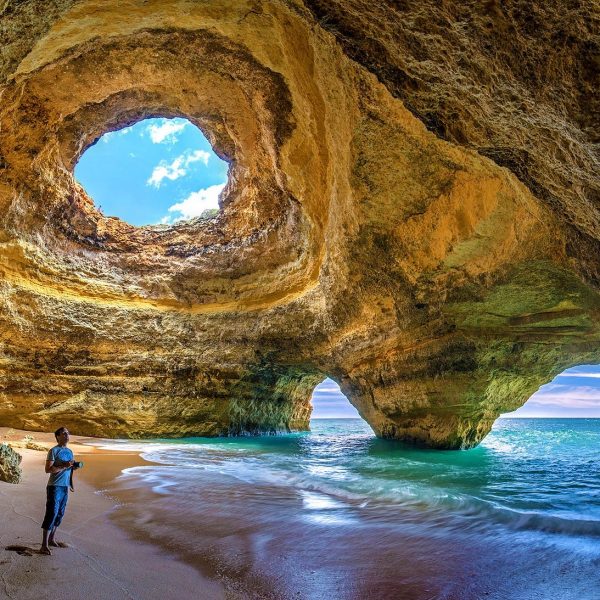
Guide to Portugal
In Guide to Portugal of Euroviajar.com we publish information about the most interesting cities, towns, villages and regions, the famous and less known ones, with information useful for travellers.
Quick Facts about Portugal
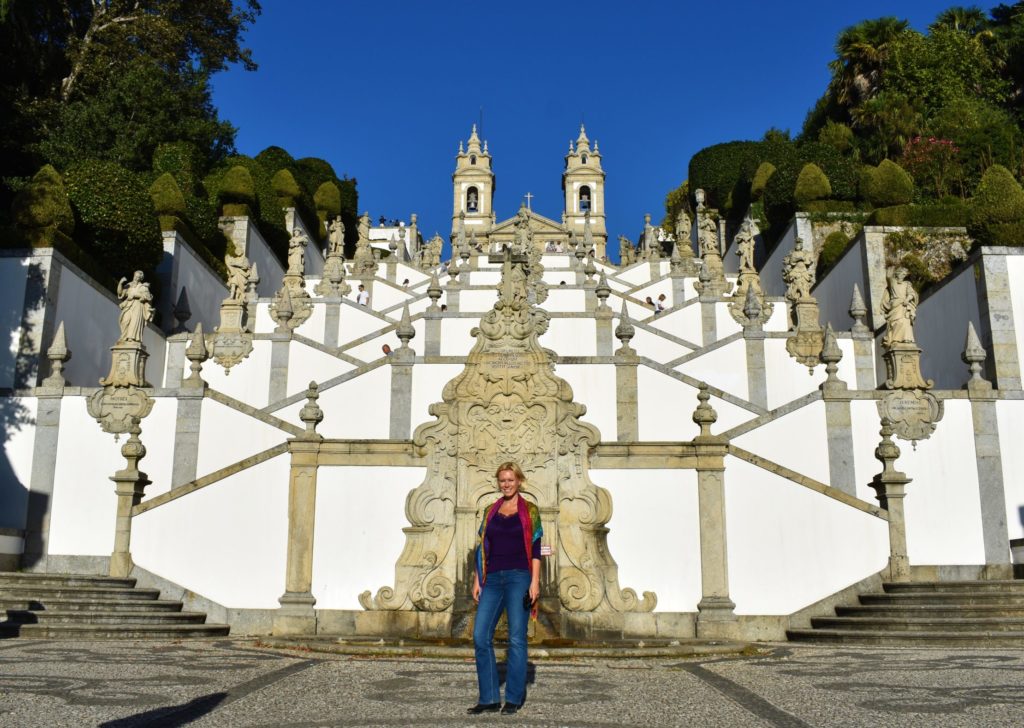
Perfect harmony of the staircase leading to Bom Jesus do Monte church in Braga
Portugal is the westernmost country of Europe, located in the Iberian Peninsula, which it shares with its only neighbour country: Spain.
It is flanked by the Atlantic Ocean from the West and the South with as much as 830 km of the spectacular coastline.
Its territory includes subtropical Atlantic archipelagos: the Azores and Madeira.
Population: 10.3 million
Language: Portuguese
Time zone: UTC−1
Currency: EUR
The capital city: Lisbon
Other main cities: Porto, Vila Nova de Gaia (next to Porto), Braga
Overview of Portugal
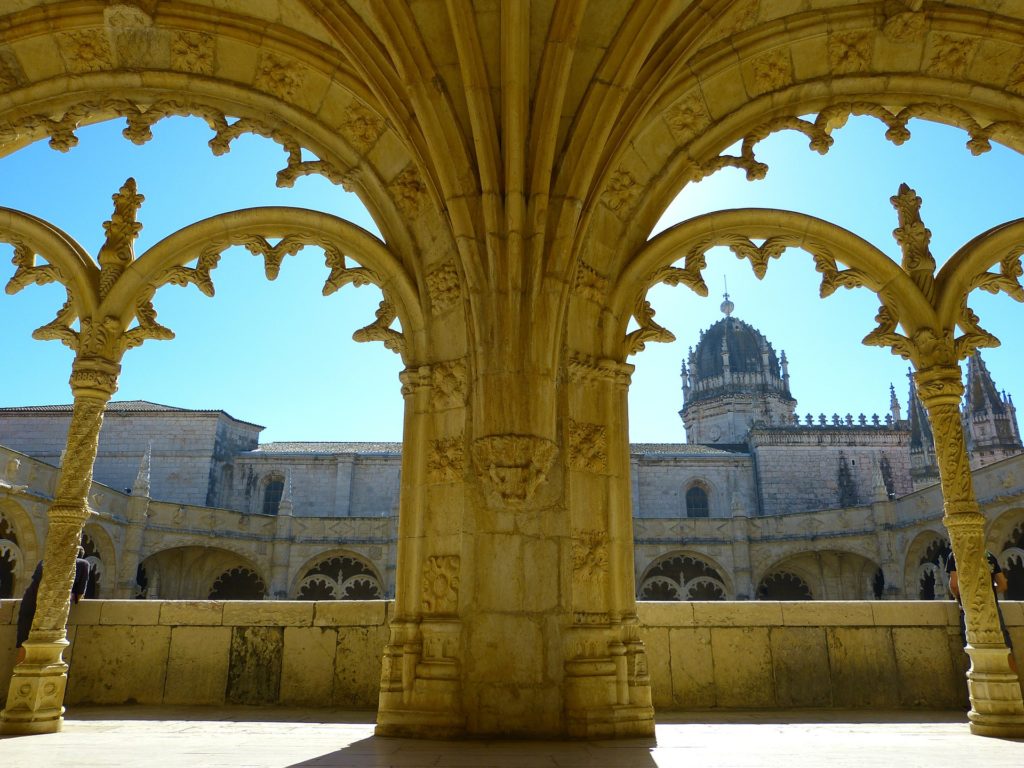
The Jeronimos Monastery amazes with its sublime architecture
Portugal has a very proud history – in the 15th and 16th centuries, in The Age of Discoveries, it has become the world’s strongest maritime power. That glorious era is the foundation of the Portuguese identity. The country’s greatest monuments, cultural aspects and arts come from this period.
For a relatively small country, it has a lot of character.
The Highlights of Portugal
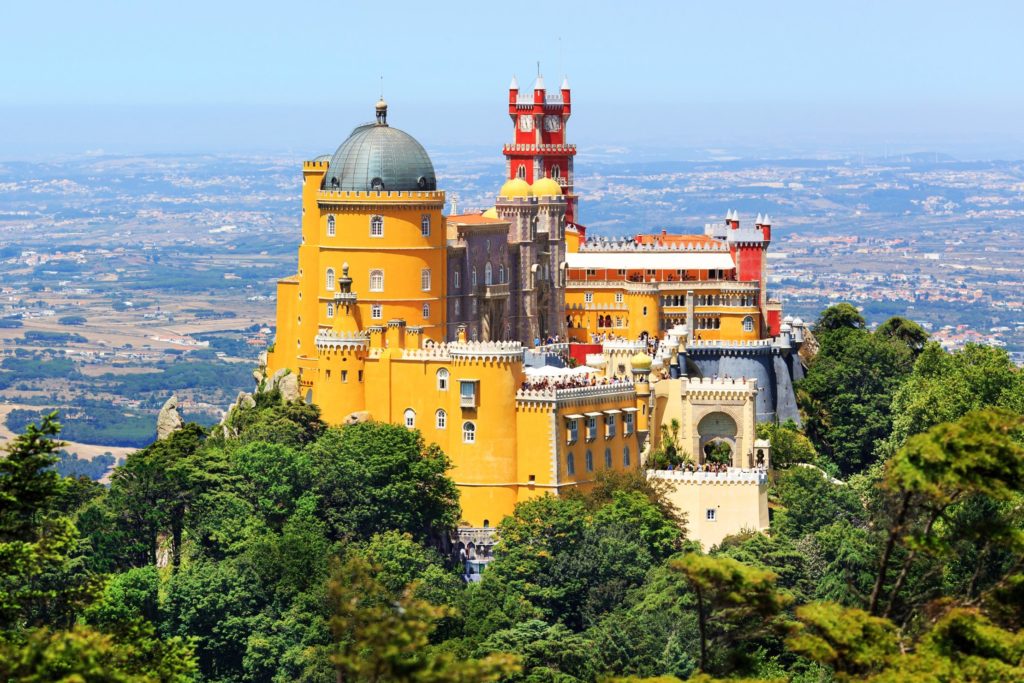
Pena Palace in Sintra will amaze you with its intricate architecture
The variety of the landscapes and regions of Portugal is impressive, as much as the cultural heritage well preserved in many areas.
Before mentioning other attractions, remember that a country positioned in the very west of Europe has on most parts of its coastline the most perfect sunsets sinking directly above the Ocean!
The Highlights of the North of Portugal
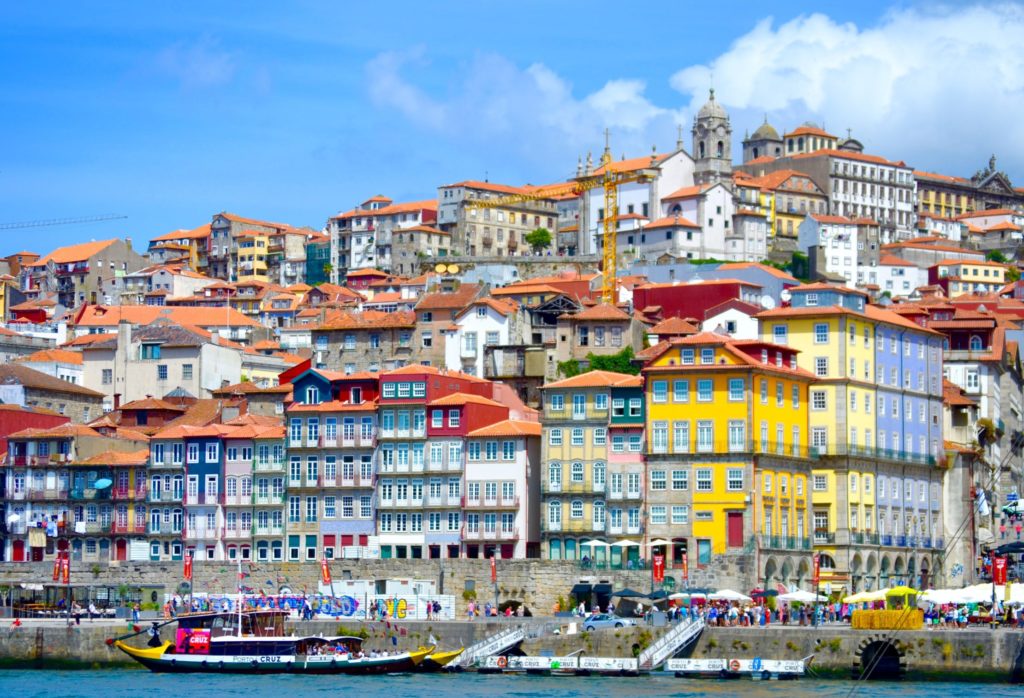
Charming colourful hoses of the Ribeira district in Porto
- Porto – the second largest city, bustling with life and very authentic even if touristy. Famous for port wine cellars, colourful Ribeira district, 6 high bridges and several splendid azulejo-covered churches.
- The Douro Valley with its hilly terraced port wine vineyards.
- Guimarães – “the birthplace of Portugal” where its first King was born.
- Braga – the centre of Portuguese Christianity.
- Coimbra – the charming seat of the oldest university of Portugal.
The Highlights of the Centre of Portugal

A fascinating view at Lisbon from above from one of its many miradouros – viewpoints
- Lisbon – magnificent capital city of Portugal is a must see, with its spectacular art and architecture, views from the tops of its 7 hills, great culture and subperb museums.
- Cascais – luxury and lovely sea resort next to Lisbon.
- Sintra – fairytale-like town full of splendid palaces and enormous secret gardens.
- Óbidos – perfect example of a typical small fortified Portuguese town, very romantic.
The Highlights of the South of Portugal
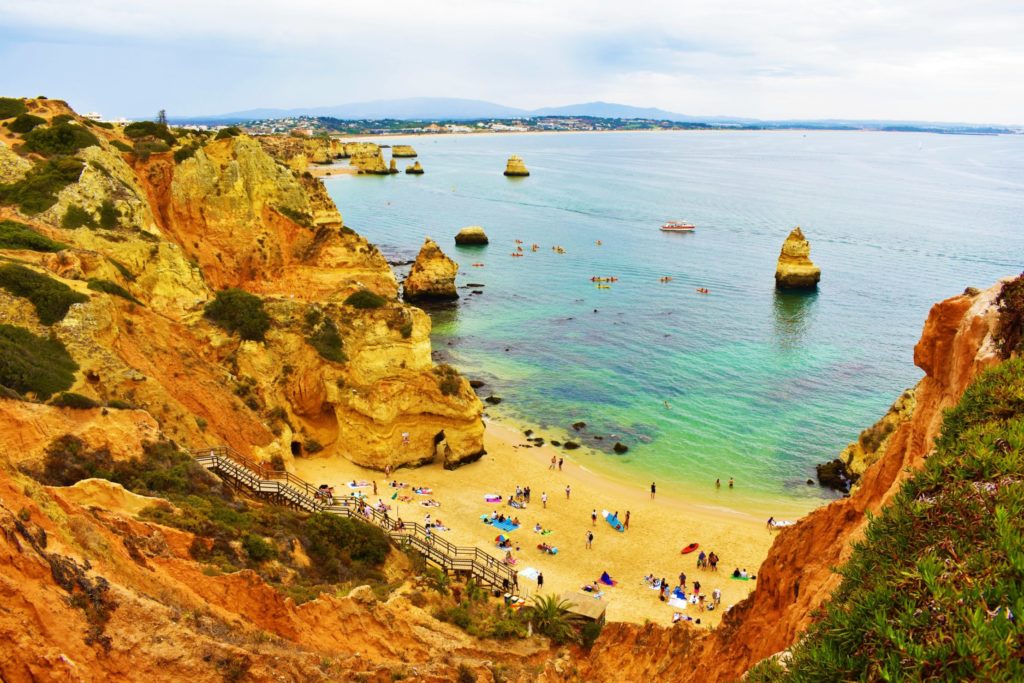
Spectacular view over Praia do Camilo and the coastline of Lagos
- Sagres – the southernmost point of Portugal with its great 2 lighthouses.
- West Algarve – beaches at the south-east corner of the country.
- Beaches all around Lagos.
- Lagoon of Rio Formosa in Faro with its fantastic islands and their beaches.
- Faro with its splendid cathedral and pleasant old town.
The Portuguese Islands
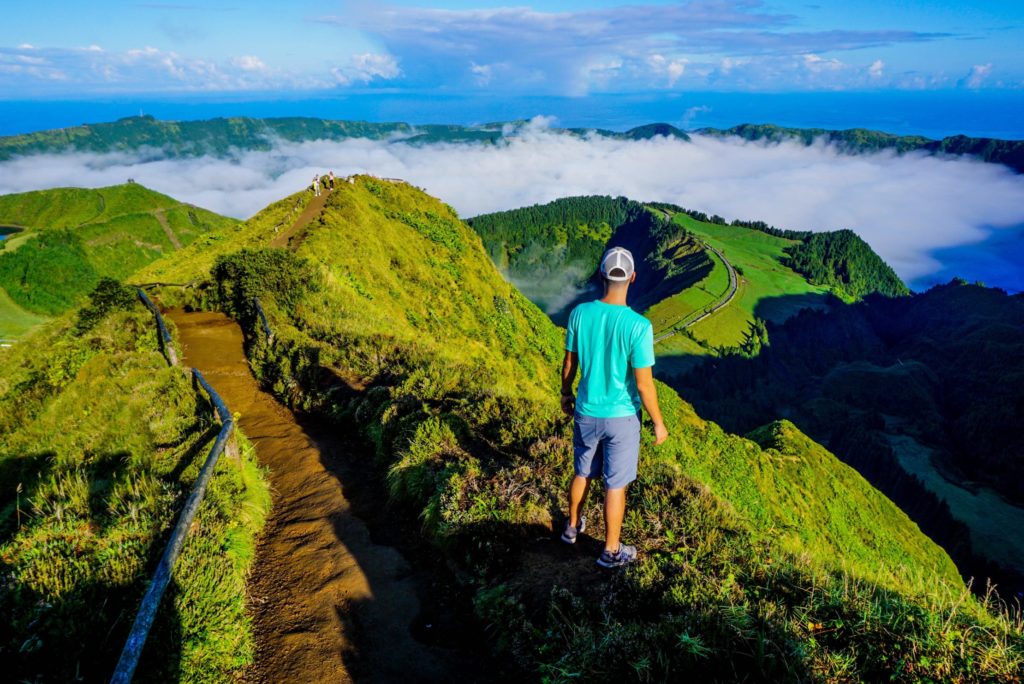
Spectacular views, high mountains and intense greenery are among Madeira’s top attractions
- Madeira – the biggest of the islands and located slightly closer to the mainland, is a subtropical paradise, with fantastic mountains and volcanic landscapes.
- The Azores – the archipelago in the middle of the Atlantic Ocean has active volcanoes with a fascinating moon-like landscape, and plenty of lush greenery.
The Portuguese Identity
The Atlantic Ocean’s Influence
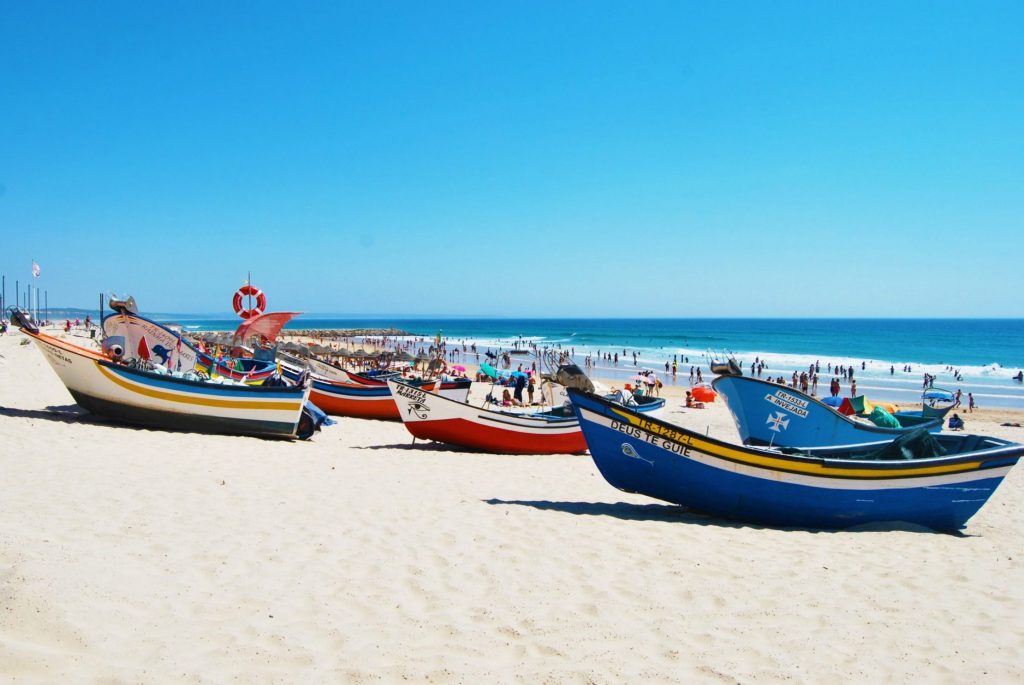
Boats on Costa da Caparica beach Portugal
Portugal is intrinsically linked to the Atlantic Ocean. You never forget here that is is a maritime country. Wherever you go, you never get too far from its spectacular coast with its impressive lenght of 830 km.
Portuguese Art & Architecture
There is a lot to say about the splendid Portuguese art and architecture, considering that there are as many as 15 UNESCO World Heritage sites in Portugal. The main 100% Portuguese elements are the following:
Azulejos
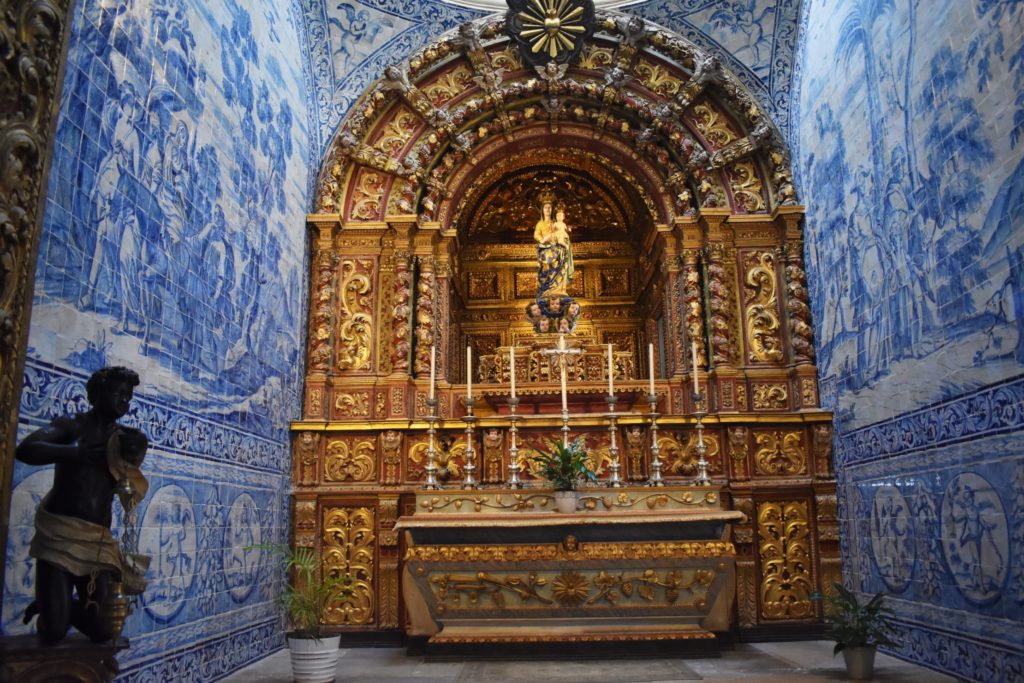
Characteristic azulejos (tiles) decoration of the chapel in Faro cathedral
The most iconic Portugal view are huge surfaces covered with characteristic tiles called azulejos, usually blue-and-white or blue-white-yellow, but occurring also in a variety of shapes and colours. The are omnipresent. They embellish the facades of residential buildings, churches, walls of chapels, corridors and staircases, interior walls of restaurants, offices and shops. You will see them literally everywhere.
Trimmed White Houses
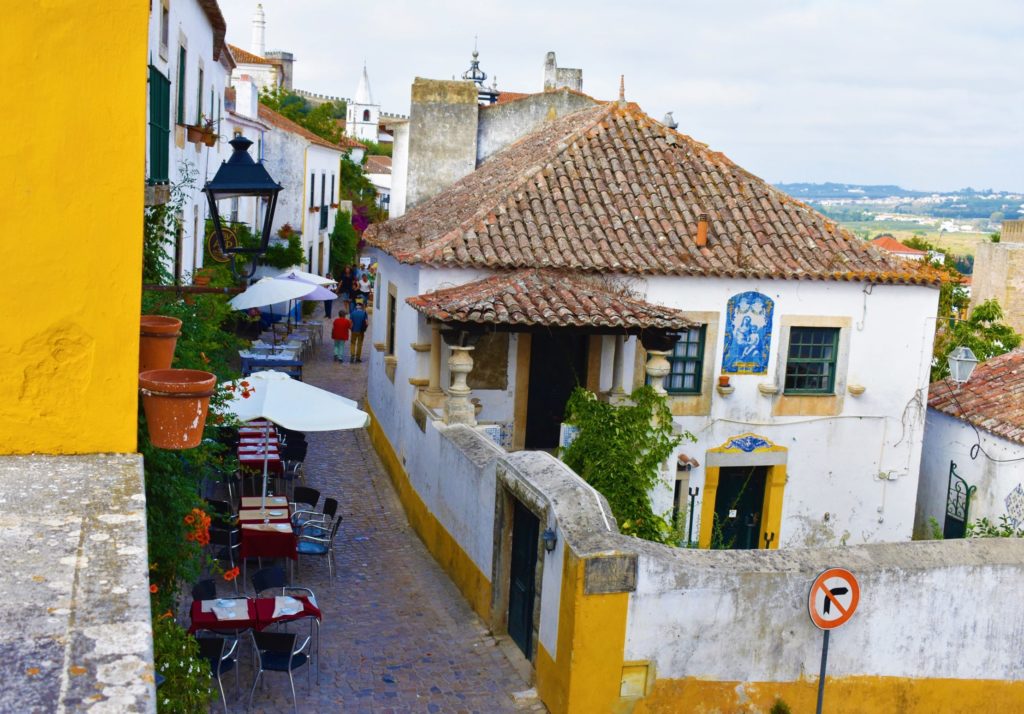
Óbidos is one of the prettiest and most romantic little Portuguese towns
Typical houses that you will see in most small towns and villages all around the country, are whitewashed with trimmings in vivid yellow or bright blue around the windows and along the borners and lower lines of the building. Another characteristic feauture are their tiled roofs.
Manueline Style
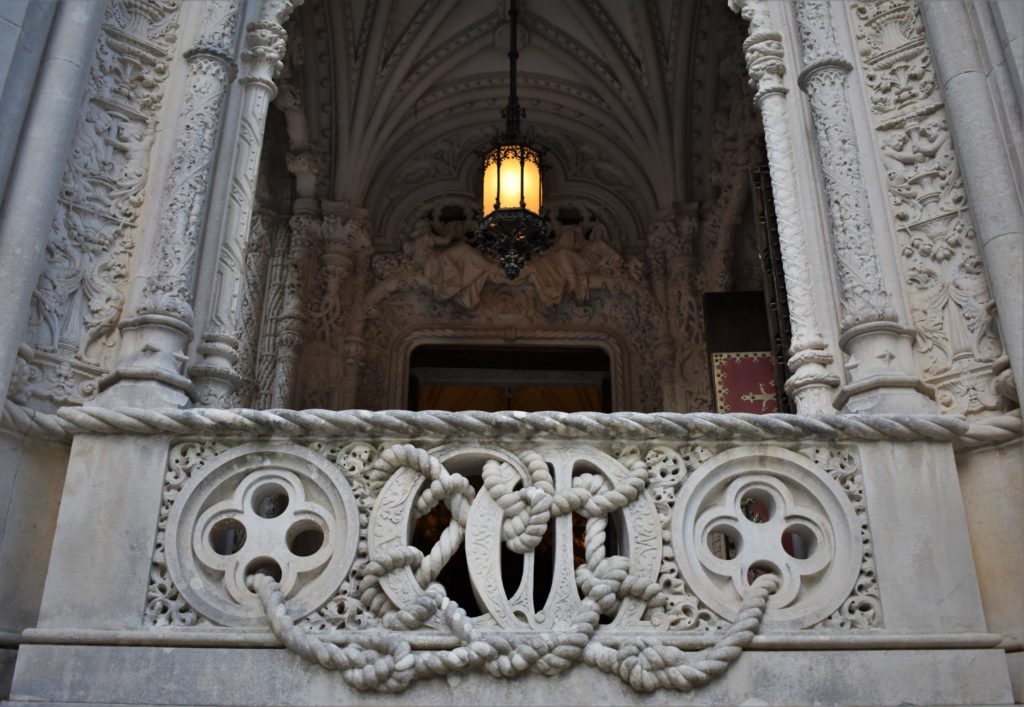
Manueline architectonic details of the Quinta da Regaleira main palace are spectacular
One of the most striking and attractive elements of the Portuguese art is the Manueline style, which flourished in the golden era of the country, under the King Manuel I (hence the name). It is a variety of Late Gothic with some signs of early Renaissance, which features characteristic maritime motifs inspired by the Age of Discovery, such as seafare elements, anchors, or splendid twisted ropes carved in stone.
Portuguese Religiosity
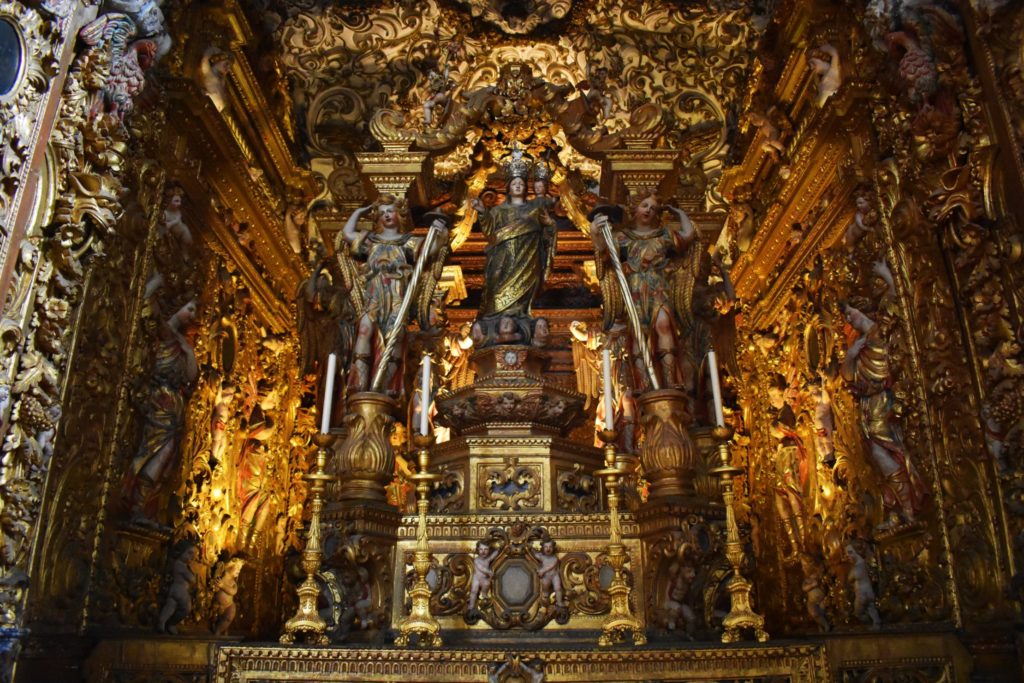
Incredibly intricate gilded wooden figures in Baroque style in Faro cathedral
Another very strong element of the Portuguese identity is the nation’s devotion to Christianity. Approx. 84% of the Portuguese declare to be Catholic, and you will quickly notice the unbelievable quantity of churches in the entire country. Arguably, many of these churches and monasteries are the country’s richest and most impressive monuments.
Quick History of Portugal
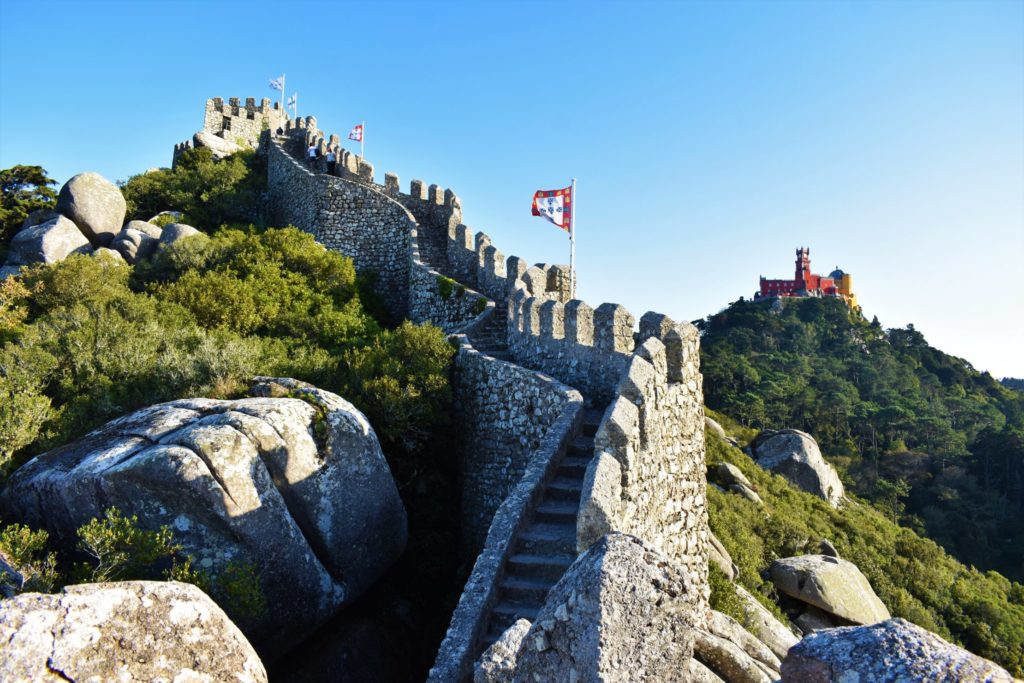
When approaching the highest tower of the Moorish castle in Sintra, you also get closer to the Pena Palace on the neighbouring hill
The territory of nowadays Portugal was inhabited by Celts, Romans and for long by Arabs (as a part of Al-Andalous). The Kingdom of Portugal was founded in 1139, following the Christian Reconquista, and it existed till 1910.
Portugal has a glorious past as one of Europe’s major empires back in the 15th and 16th centuries. It enriched as a global maritime power, due to discoveries of new lands and setting up colonies.
Subsequently, its richness faded gradually, first due to disastrous earthquake in 1755 that destroyed Lisbon and big part of the country, subsequently, by the Napoleonic occupation and finally due to losing Brazil, its most profitable colony, in 1822.
Tips for Travellers to Portugal

Lagoon just behind Praia da Amoreira offers splendid nature – all for yourself!
- Portugal is a rather safe country.
- The Portuguese are remarkably lovely, friendly and helpful people. They are rather shy and quiet, but very gentle, genuine and honest.
- The level of knowledge of English (and a few other languages, including Spanish and French) of the locals is quite impressive. In most cities and towns you will easily get around speaking only English.
- When renting a room, in particular in Lisbon and Porto, pay attention whether there is a… window. As hard as it is to imagine, there exist “rooms” cut out of the corridor, with only a fake window opening at the corridor.
- In the restaurant, if you are served starters like bread with butter, olives, cheese, pate’ etc., ask immediately if they are for free, or say “No, thank you”. It is a common practise in touristy cities to bring you a “generous” mix of starters, only to discover later on the bill the extra 10 euro per person for things you never ordered and sometimes didn’t even touch. However, it’s the only sign of dishonesty we ever encountered in Portugal.
- If you plan your trip to Portugal in autumn or winter, choose rather the centre or the south than the north. From Lisbon downwards, the climate is mild, sunny and quite dry, and you can have sunny weather in any month. In the north however it is more rainy, so it’s advisable to visit the north between late April and October, rather than in the rest of the year.
- The ocean is always cold (but still the beaches are splendid), so don’t ever hope for warm bath in Portugal… unless you plan it in a swimming pool :)
The Best of Portugal

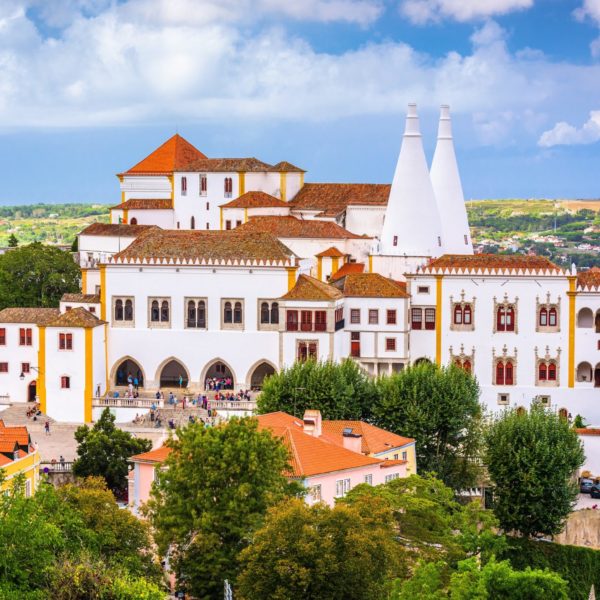
The Best Places to Visit in Portugal: A Magical Journey from North to South
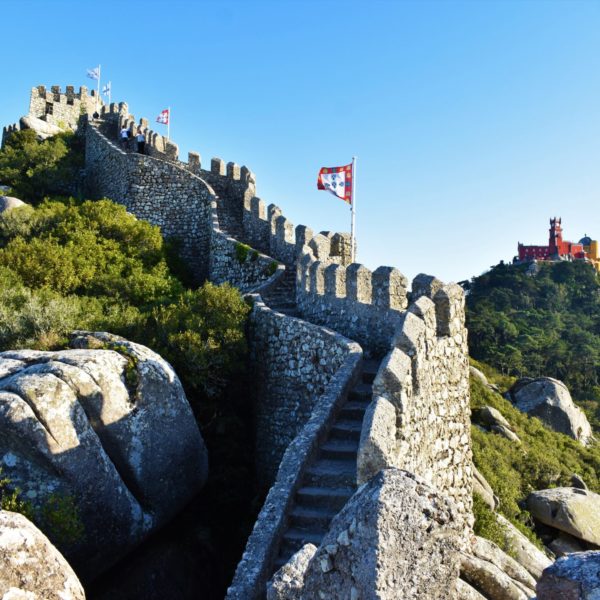
25 Fascinating Photos of Sintra, Portugal That Will Make You Want To Go There Immediately
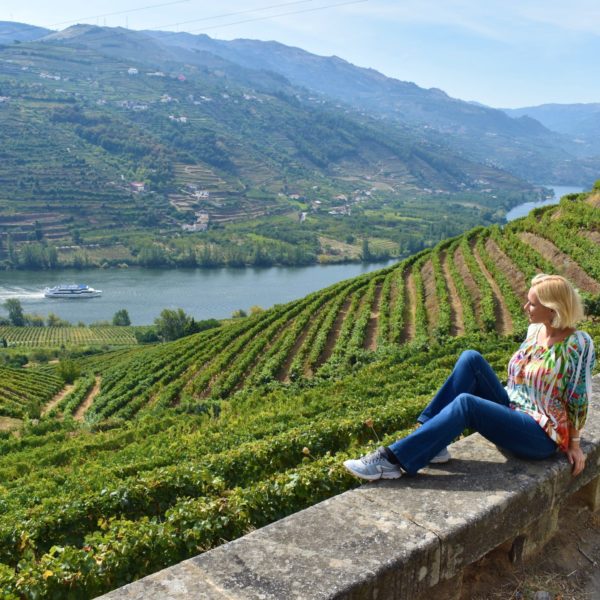
Douro Valley Vineyards near Porto, Portugal – Where the Port Wine is Born
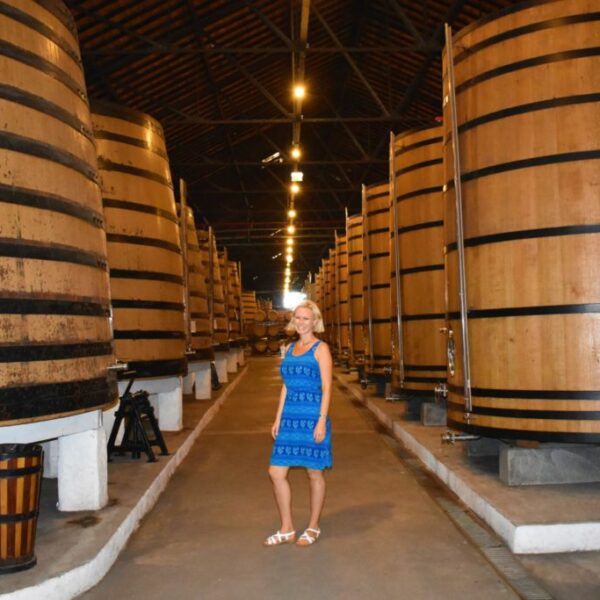
5 Best Wine Cellars in Porto, Portugal – An Experience You Can’t Miss!
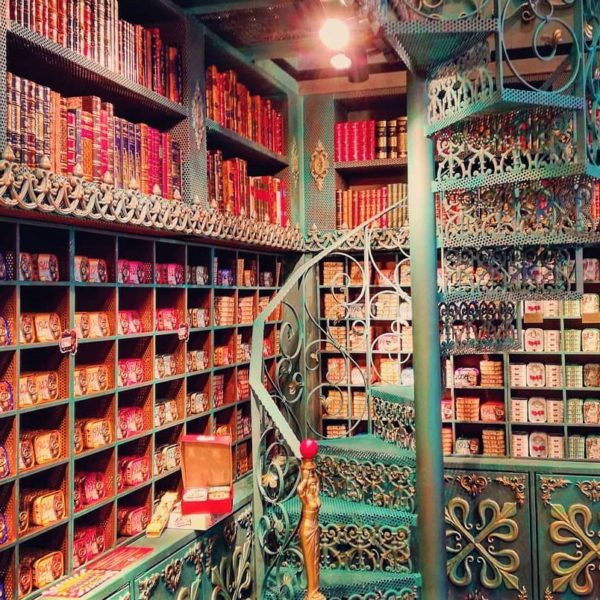
Shopping in Lisbon – Typical Portuguese Products, Gifts & Souvenirs
The Best Beaches of Portugal
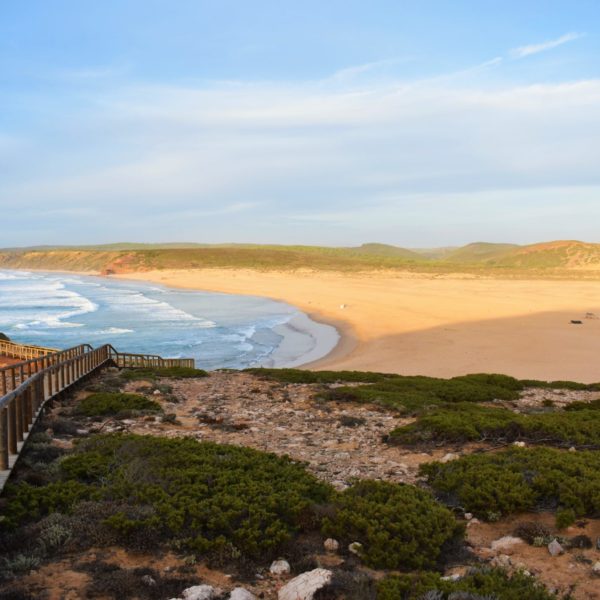
25 Stunning Photos of Algarve, Portugal That Will Make You Dream
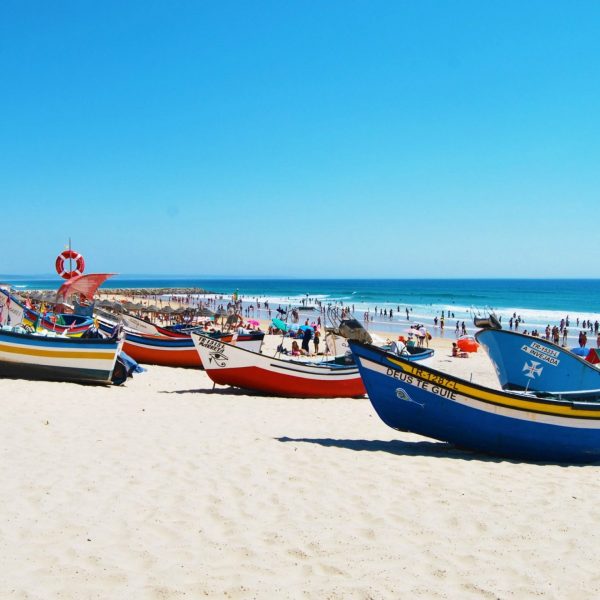
The Best Beaches Near Lisbon
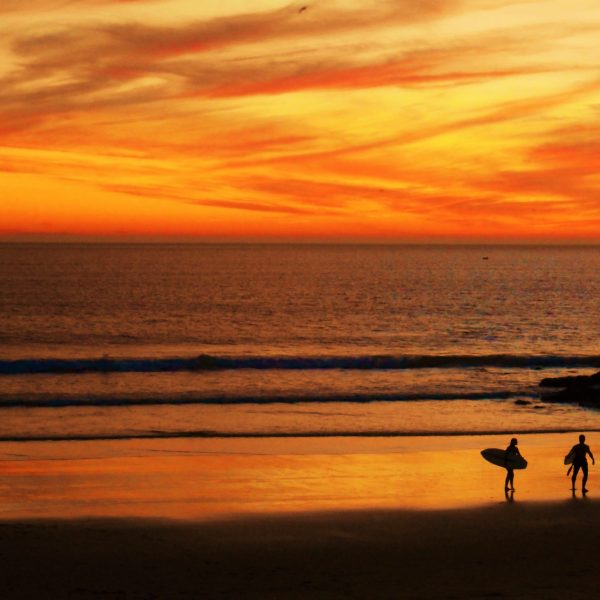
Costa da Caparica Beach – Among the Largest Beaches in Portugal
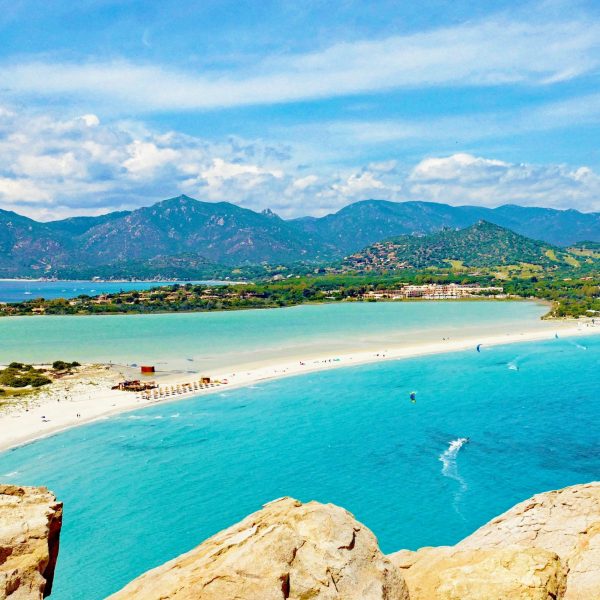
Caribbean Beaches in Europe
Guide to Lisbon
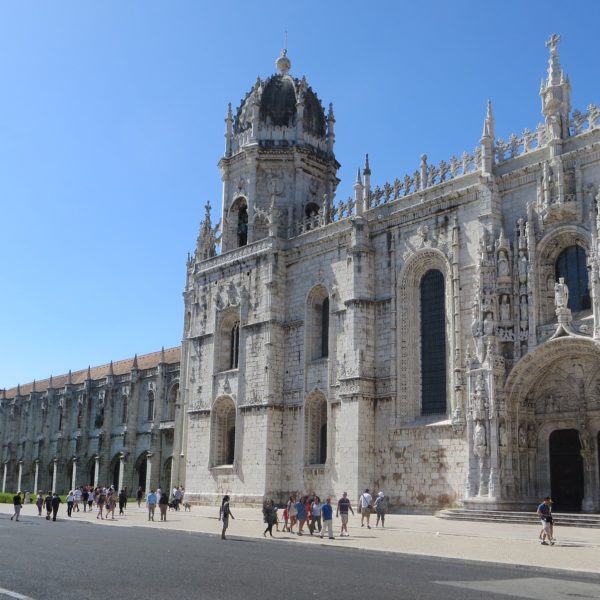
Jeronimos Monastery in Lisbon – Opening Time, Price, Tickets and Opinions

Shopping in Lisbon – Typical Portuguese Products, Gifts & Souvenirs
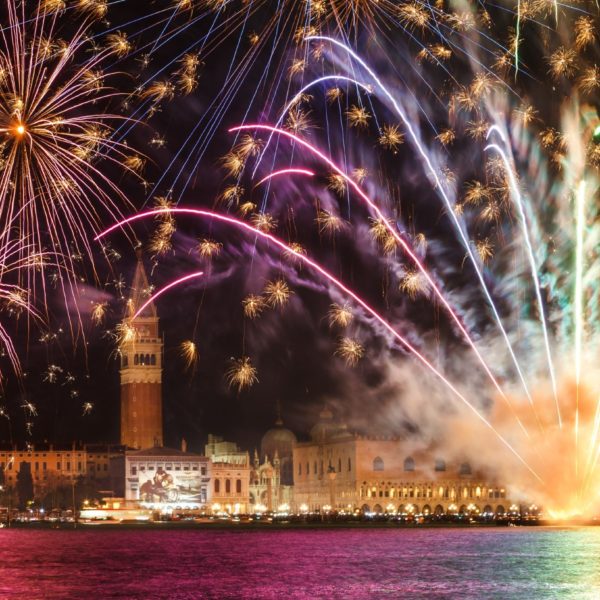
The Best Cities in Europe for New Year’s Eve – Unique & Exciting!
Guide to Porto

5 Best Wine Cellars in Porto, Portugal – An Experience You Can’t Miss!

